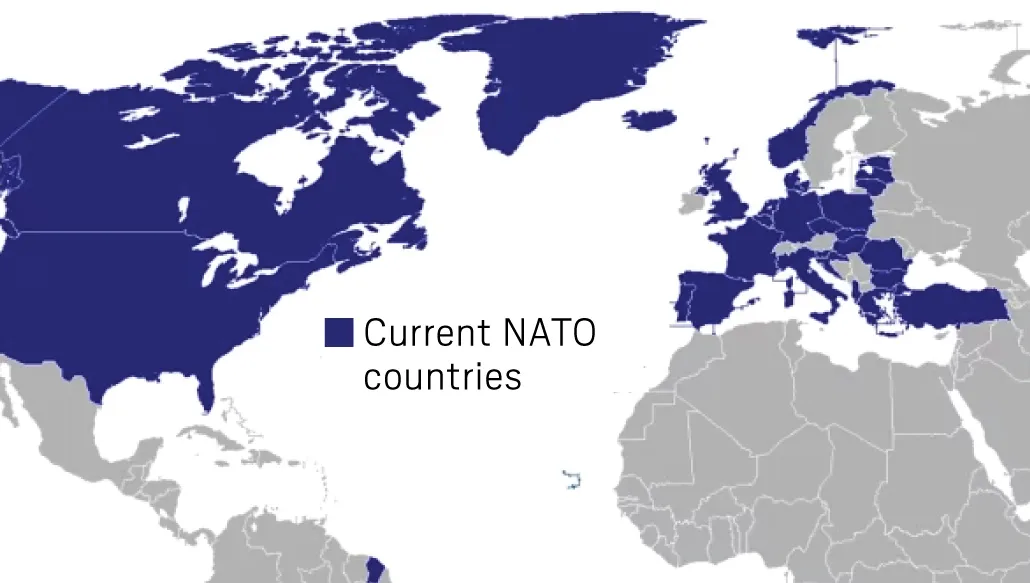Table of Contents
Dave Patterson
Liberty Nation News
Mismanagement has put the US nuclear response capability in jeopardy. The replacement for the 1970s-era Minuteman III intercontinental ballistic missile (ICBM) system currently deployed is Sentinel, but the program is struggling. In the meantime, Russia, China, North Korea, and potentially Iran are rapidly modernizing or growing their nuclear threat to the United States.
This subject is not new to Liberty Nation News. In early April, LNN reported that the Sentinel program was “at least 37 per cent more than the previously projected $96 billion.” In fewer than four months, the projected price tag has risen substantially. “Cost projections have grown once again for the US Air Force’s new Sentinel intercontinental missile, with the program now expected to cost taxpayers $141 billion, or 81 per cent more than forecast four years ago,” Bloomberg reported.
Cost Growth for Nuclear Missile System Continues
The cost growth has exceeded the limits for the Nunn-McCurdy Critical Breach, which targets programs with an increase of 25 per cent or more from the existing Acquisition Program Baseline at the beginning of the program. The Sentinel program has blown by that baseline and is eligible for termination; if not, the Pentagon must provide a compelling explanation and certification as to why the Sentinel ICBM should be continued. “The Office of the Secretary of Defense reviewed the program as required and determined it should continue. The Under Secretary of Defense for Acquisition and Sustainment, Dr William LaPlante, cited a lack of less costly alternatives and national security,” The Center Square observed.
LaPlante is saying that taxpayers are stuck paying the bill if they want to stay safely under the US nuclear umbrella. Sentinel is critical to the preservation of the Triad, which consists of manned nuclear bombers, nuclear missile submarines, and land-based ICBM capability. The problem LaPlante is not talking about is that the program was destined for cost increases while the ink was drying on the contract awarded to Northrop Grumman.
The Air Force failed to account for the fact that the new ICBM would not be able to use the nearly 7,500 miles of copper cables that currently link the Minuteman III launch silos spread throughout the upper Midwest. Additionally, it turns out that digging up thousands of miles of wiring to be replaced by fiber-optic cables impinges on private property, which requires “permanent and temporary real estate easements with hundreds of landowners,” Bloomberg explained.
Though hardly an excuse for the burgeoning costs and failure to meet the original schedule for fielding the Sentinel system, LaPlante talked about the program in a recent Pentagon press release, explaining:
“Sentinel is a truly historic program to modernize the land leg of the Triad, and its scale, scope, and complexity are something we haven’t attempted as a nation in 60 years. Having completed a comprehensive and objective assessment of the program, it is clear that the Sentinel program remains essential to US national security and is the best option to meet the needs of our warfighters.”
At issue is that the Pentagon’s acquisition community treats the fact that the Sentinel ICBM system is complex as a surprise. If the land-based element of the Triad is complicated in scale and scope, as LaPlante said, and few would argue that it isn’t, then the American taxpayers should expect more effort to be made to manage cost and schedule better. Additionally, more diligence should be applied to arrive at the original “baseline” cost estimate. Not to worry, though, the Department of Defense, in the same press statement, asserted: “Preserving schedule will be a key consideration during the program’s restructuring; however, a delay of several years is currently estimated.”
Weapon System Procurement Demands Better Management
Acquiring weapon systems, whether large or small, to ensure national security for the most powerful nation on earth is not a trivial undertaking. No one denies that. Establishing and sustaining the nuclear capability of the United States should demand the most intensely managed Pentagon programs. It’s not clear that is happening. Just a year ago, the General Accountability Office (GAO) revealed in a June 2023 analysis, “Over half of the 26 major defense acquisition programs GAO assessed that had yet to deliver operational capability reported new delays … Net costs for the 32 major defense acquisition programs that GAO assessed, both this year and last year, increased by $37 billion.”
Programs are canceled after wasting billions because there is no longer a requirement or are retained as essential to national security but have become exorbitantly expensive and late getting to the warfighters. The Pentagon must get a handle on its weapons programs. Otherwise, American taxpayers will make their dissatisfaction known to their congressional representatives. As fast as the money spigot is turned on, it can be turned off.
The views expressed are those of the author and not of any other affiliate.
This article was originally published by Liberty Nation News.









